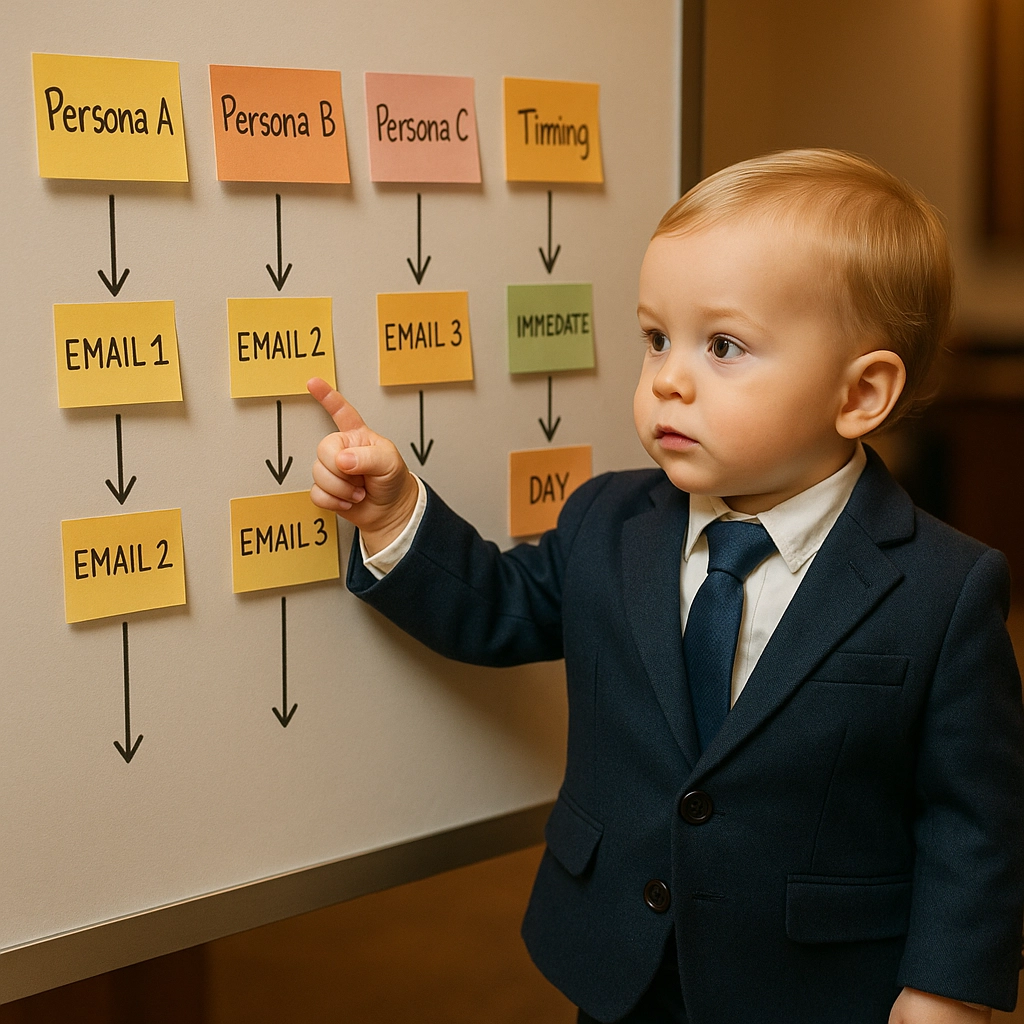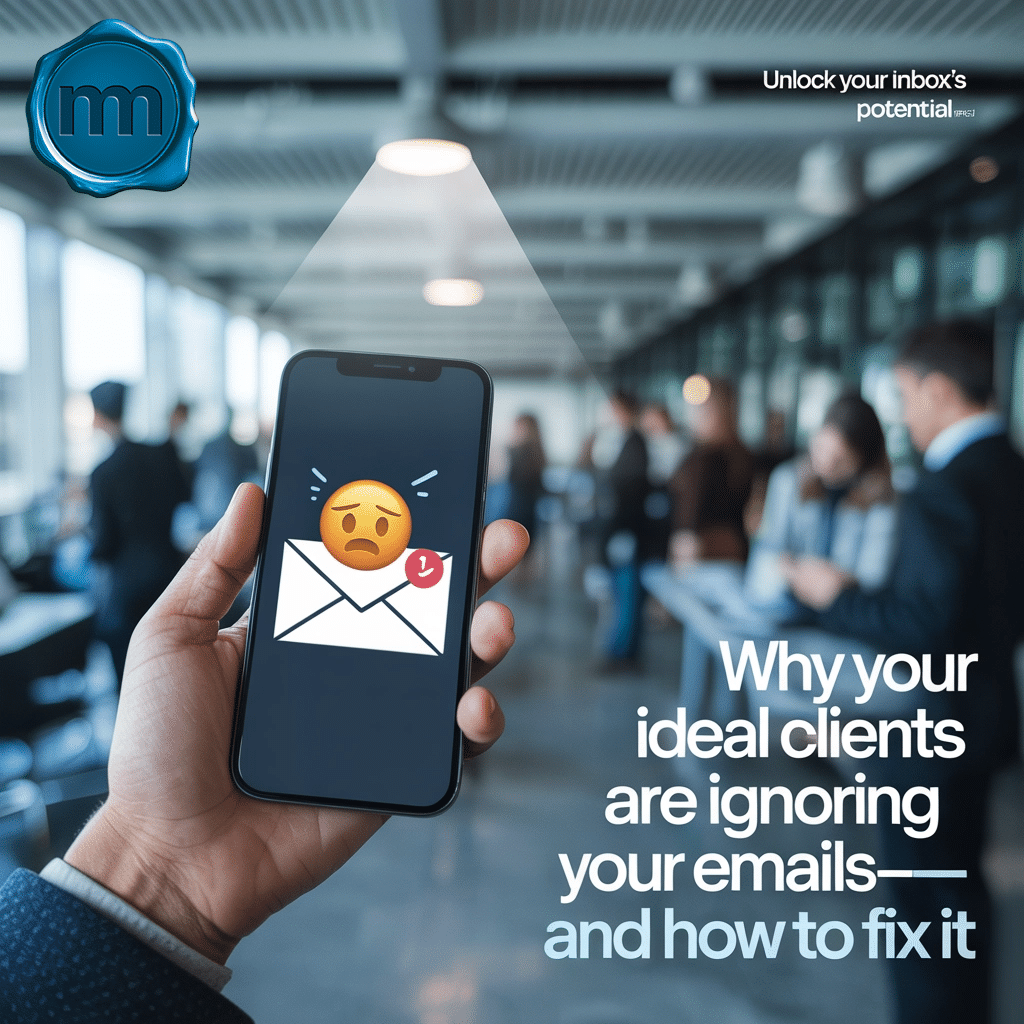You spend hours crafting the perfect email campaign. You hit send, watch the delivery rates, and then… crickets. Your open rates are dismal, click-throughs are non-existent, and your carefully nurtured prospects seem to have vanished into thin air.
Sound familiar? You’re not alone. The average email open rate across industries hovers around 21%, which means nearly 80% of your emails never get opened. But here’s the thing: it’s not about your prospects being difficult or uninterested. It’s about understanding why they’re tuning out and what you can do to earn their attention back.
The Real Reasons Your Emails Get Ignored
They’re Drowning in Generic Content
Your prospects receive dozens of emails daily, and most sound exactly the same. When your email feels like it was written for everyone, it connects with no one. Generic subject lines like “Quick Question” or “Following Up” immediately signal mass-produced content that gets deleted without a second glance.
The average business professional receives 121 emails per day. In that flood of communication, anything that doesn’t immediately demonstrate relevance to their specific situation gets filtered out as noise.

Your Timing is Off
You might be sending educational content about process optimization to someone who’s still trying to understand their current challenges. Or you’re sharing advanced strategies with prospects who haven’t even grasped the basics yet. This misalignment creates disconnect and makes your emails feel irrelevant.
Most marketing teams operate on their own schedules rather than their prospects’ buying journey stages. When timing doesn’t match your prospect’s readiness to engage with specific information, even valuable content falls flat.
The Trust Factor is Missing
B2B buyers have developed sophisticated filters for detecting sales pitches disguised as helpful content. When your emails feel like they’re pushing toward a sale rather than genuinely educating or solving problems, prospects instinctively pull back.
Trust gets built through consistent, valuable interactions over time. One-off emails or sporadic communication patterns don’t create the foundation needed for meaningful engagement.
You’re Not Speaking Their Language
Every industry, company size, and role has its own vocabulary, challenges, and priorities. When your emails use generic business terminology instead of the specific language your prospects use internally, you sound like an outsider trying to get in rather than a trusted advisor who understands their world.
How to Transform Your Email Approach
Build True Personalization Beyond Names
Real personalization goes far beyond inserting someone’s first name in the subject line. It’s about demonstrating that you understand their specific business context, industry challenges, and where they are in their decision-making process.
Segment your email lists based on company size, industry, role, and engagement behavior. Create different content tracks for different prospect types. A CFO at a 50-person company has completely different priorities than a marketing director at a Fortune 500 enterprise.
Use behavioral triggers to send relevant content at the right moments. When someone downloads a whitepaper about lead generation challenges, follow up with case studies showing how similar companies addressed those exact issues, not a generic sales pitch about your services.

Focus on Education, Not Conversion
The most effective B2B emails educate first and nurture relationships second. Conversion happens naturally when prospects trust you as a knowledge source and advisor.
Share industry insights, best practices, and actionable strategies your prospects can implement regardless of whether they work with you. When your emails consistently provide value without strings attached, recipients start looking forward to hearing from you.
Create content series that build on each other. Instead of sending random tips, develop educational sequences that take prospects through a logical learning progression about topics relevant to their challenges.
Master the Art of Timing
Map your email content to different stages of the buyer’s journey. Someone just becoming aware of a problem needs different information than someone actively evaluating solutions.
Pay attention to engagement signals that indicate readiness for deeper conversations. When prospects consistently open and click through educational content, they’re showing readiness for more detailed discussions about implementation.
Use automation to deliver the right message at the optimal moment, but make it feel human and relevant rather than robotic and scheduled.

Create Genuine Two-Way Communication
Replace broadcast-style emails with conversations. Ask questions, invite responses, and actually engage when people reply. Many marketing emails use no-reply addresses, which immediately signals that you don’t want actual dialogue.
Include questions in your emails that encourage thoughtful responses. Instead of “Let me know if you have questions,” try “What’s been your biggest challenge with [specific topic] in the last quarter?”
When prospects do respond, prioritize those conversations. Quick, thoughtful replies to email responses can transform casual readers into engaged prospects ready for meaningful discussions.
Demonstrate Understanding of Their Reality
Reference specific challenges that affect your prospects’ industry, company size, or role. Show that you understand not just what they do, but the pressures and constraints they face in doing it well.
Use case studies and examples from similar companies or situations. When prospects see themselves reflected in your content, they pay attention because it feels directly relevant to their reality.
Address the internal dynamics and decision-making processes they navigate. B2B purchases involve multiple stakeholders, budget considerations, and implementation challenges. Acknowledge these realities in your communications.
Building Long-Term Engagement
Consistency Builds Trust
Establish a predictable communication rhythm that prospects can count on. Whether it’s weekly insights, monthly deep-dives, or quarterly industry reports, consistency helps build anticipation and trust over time.
Maintain quality standards across all communications. One poorly written or irrelevant email can undo months of relationship building, while consistent value delivery creates compound engagement effects.
Make Every Email Count
Before sending any email, ask yourself: “Would I find this valuable if I received it?” If the answer isn’t an immediate yes, don’t send it. Your prospects’ attention is limited and precious.
Each email should stand alone as valuable while contributing to a larger relationship-building strategy. Even someone reading your email for the first time should find immediate value, while regular readers should see how it builds on previous conversations.

Measure What Matters
Track engagement metrics beyond open and click rates. Look at forward rates, reply rates, and time spent reading. These deeper engagement signals indicate whether your content truly resonates.
Pay attention to which topics and formats generate the most engagement, then create more content along those lines. Your prospects are telling you what they value through their behavior.
The goal isn’t just getting emails opened. It’s building relationships with prospects who become advocates for your expertise within their organizations. When your emails consistently deliver value, recipients start sharing them with colleagues and referencing your insights in internal discussions.
Focus on nurturing marketing qualified leads through education and relationship building rather than pushing for immediate sales conversations. The prospects who engage deeply with your educational content become the highest-quality opportunities when they’re ready to move forward.
Your email strategy should build bridges, not barriers. When prospects start looking forward to your emails because they consistently learn something valuable, you’ve transformed from a vendor trying to get attention into a trusted advisor they actively seek out for guidance.

